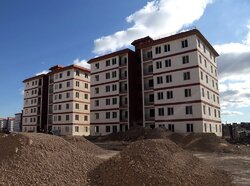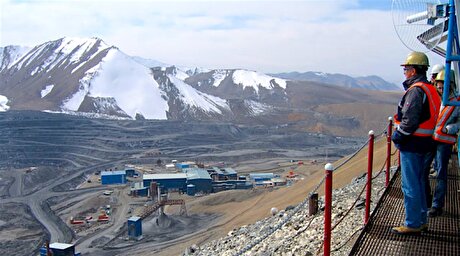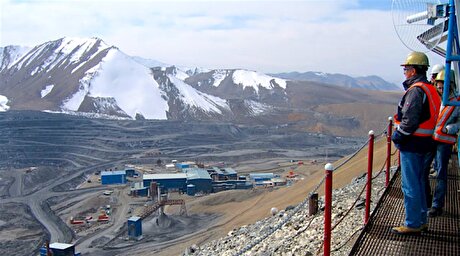
IRHF ready to build up to 250,000 housing units in a year

In the National Housing Action Plan, it was decided that the government would build 400,000 housing units, of which the share of the Islamic Revolution Housing Foundation was set at 138,000 units, and so far, we have got land from the National Land and Housing Organization for 73,000 units”, Javad Haqshenas stated.
About 53,000 applicants who registered and their files were investigated were approved and introduced to the bank, and this number also paid the initial amount, he added.
“We are ready to carry out our duties according to the plans of the new minister of transport and urban development”, the official further stressed.
The deputy speaker of the parliament has recently said that by using the land, facilities and the capacity of the private sector, it is possible to build one million housing units in the country.
Speaking in a TV interview on August 29, Ali Nikzad referred to the plan for surge in housing construction, and said that the MPs presented the plan to the parliament, which became law yesterday.
He continued by pointing out that this plan is very progressive; in this plan, the issue of land and the transfer of government lands to the Ministry of Transport and Urban Development was accelerated.
Also, the deputy Head of Iran’s Mass Construction Association Iraj Rahbar has recently said the country’s contractors are capable of constructing one million housing units a year if the necessary funding and land is provided.
Mentioning a plan for the construction of one million affordable housing units per year by the new government, Rahbar said: “allocating land and financing are two important factors for the successful implementation of any housing project, and if these two are provided, building one million housing units per year will be easily possible.”
The official noted that over the last three years, many efforts have been made to allocate the needed land for housing projects including the National Housing Action Plan to the Ministry of Transport and Urban Development, but the land has not been provided as needed.
Rahbar further stressed that there are different ways to attract financial resources for housing construction projects including the use of private sector potentials.
If the trust between the private sector and the government is restored, the issue of taxation on housing projects is resolved and the government’s dues to the private sector contractors are paid on time, mass builders will be more motivated to participate in construction projects, he said.
The official noted that private sector investors have huge resources that can be guided into mass construction projects if they are encouraged and appropriate incentives are considered by the government.
Referring to the recent rise in the prices of cement and steel as main data-x-items used in construction, he continued: "The rise in the prices of cement and steel is one of the obstacles in housing production that the government must address; the government has provided all the necessary facilities including cheap energy for the cement and steel production units, but we see that such products are exported instead of being supplied to the domestic market.”
In early August, Mahmoud Mahmoudzadeh, deputy transport, and urban development minister announced that planning has been made and preparations have been done to start constructing 1.3 million affordable housing units across the country.
Mahmoudzadeh said the required regulations have been prepared and facilities have been created to provide land for the mentioned housing units by the next government.
“With the measures taken, the conditions are more favorable for the new government to begin the work,” he noted.
Meanwhile, Iran’s newly appointed Transport and Urban Development Minister Rostam Qassemi said his ministry will strongly pursue the National Housing Action Plan during his tenure.
“The implementation and completion of the National Housing Action Plan, for which a lot of efforts have been made, will continue in the 13th government,” Qassemi said on Thursday.
“Providing affordable housing for lower classes is the priority of the ministry,” he stressed.
Underlining some of his ministry’s major plans during his office, the official said: “Strengthening various sectors of transport including land, air, sea and rail will be on the agenda and we will try to increase the share of transport in the country’s Gross Domestic Product.”
The official further noted that his ministry will try to complete the semi-finished projects and fulfill the demands of the government and people.
Started in winter 2018, the National Housing Action Plan aims to construct 400,000 small and medium-size apartments (70-100 square meters in size) across the country and particularly in Tehran, where housing prices have risen most sharply.
Nearly half of the total number of the said houses will be constructed in Tehran’s suburban “new towns” such as Parand and Pardis, respectively located in the west and east of the city.
Back in March, former Transport Minister Mohammad Eslami had announced that 510,000 residential units will be provided for the applicants under the framework of the National Housing Action Plan during the current year.
In early September 2019, the registration of the National Housing Action Plan was started from Kerman Province. The second round of registration began in ten other provinces in November that year.
Applicants in Sistan-Baluchestan, Qom, North Khorasan and South Khorasan provinces registered first and those from Kordestan, Kohgiluyeh-Boyerahmad, and Golestan came in the second stage, while from Chaharmahal-Bakhtiari, Hamedan, and Yazd provinces came in the third stage.
Source: Tehran Times


Trump weighs using $2 billion in CHIPS Act funding for critical minerals

Codelco cuts 2025 copper forecast after El Teniente mine collapse

Electra converts debt, launches $30M raise to jumpstart stalled cobalt refinery

Barrick’s Reko Diq in line for $410M ADB backing

Abcourt readies Sleeping Giant mill to pour first gold since 2014

Nevada army depot to serve as base for first US strategic minerals stockpile

SQM boosts lithium supply plans as prices flick higher

Viridis unveils 200Mt initial reserve for Brazil rare earth project

Tailings could meet much of US critical mineral demand – study

Kyrgyzstan kicks off underground gold mining at Kumtor

Kyrgyzstan kicks off underground gold mining at Kumtor

KoBold Metals granted lithium exploration rights in Congo

Freeport Indonesia to wrap up Gresik plant repairs by early September

Energy Fuels soars on Vulcan Elements partnership

Northern Dynasty sticks to proposal in battle to lift Pebble mine veto

Giustra-backed mining firm teams up with informal miners in Colombia

Critical Metals signs agreement to supply rare earth to US government-funded facility

China extends rare earth controls to imported material

Galan Lithium proceeds with $13M financing for Argentina project

Kyrgyzstan kicks off underground gold mining at Kumtor

Freeport Indonesia to wrap up Gresik plant repairs by early September

Energy Fuels soars on Vulcan Elements partnership

Northern Dynasty sticks to proposal in battle to lift Pebble mine veto

Giustra-backed mining firm teams up with informal miners in Colombia

Critical Metals signs agreement to supply rare earth to US government-funded facility

China extends rare earth controls to imported material

Galan Lithium proceeds with $13M financing for Argentina project

Silver price touches $39 as market weighs rate cut outlook

















